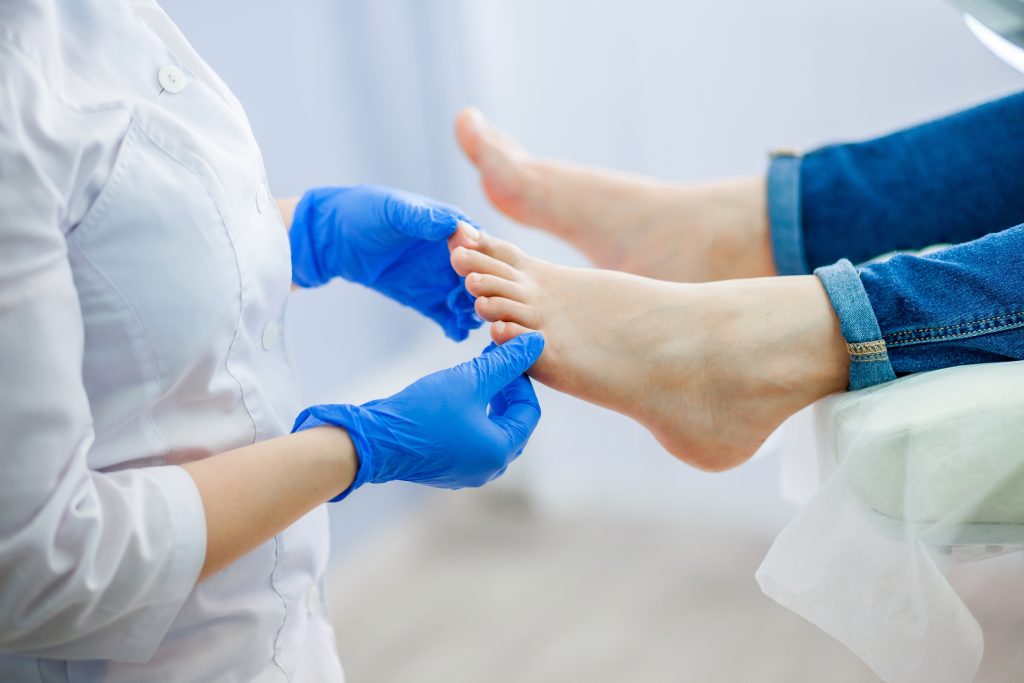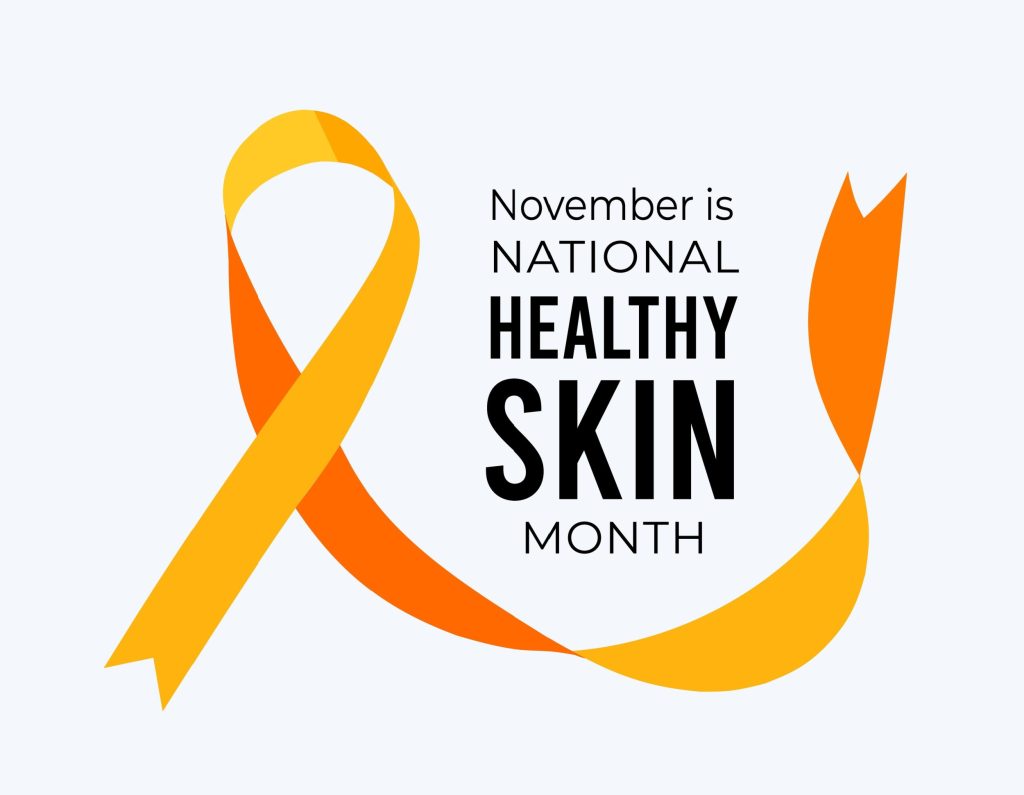
Your nails can give you great clues when it comes to your health. The shape, color, texture, and strength of your nails can reveal everything from vitamin deficiencies and fungal infections to underlying conditions like thyroid problems or autoimmune diseases. Even subtle changes like ridges, discoloration, or breakage can be early warning signs that something might be off.
The experts at Florida Dermatology and Skin Cancer Centers invite you to continue reading to learn more about the most common nail concerns, how to treat and care for them, and the truth behind some popular nail health myths. Whether you’re dealing with brittle nails or curious about that strange spot on your toenail, let’s take some time to uncover what your nails are really trying to tell you.
Nail Fungus: What it Looks Like and What to Do
Nail fungus, also called onychomycosis, is one of the most common nail problems we see, and it’s more than just a cosmetic issue. With fungus, nails usually start showing a white or yellow spot under the tip of the nail. This can slowly spread, and as the infection progresses, the nail may become thickened, discolored, brittle, or even crumbly. It might also smell odd or cause discomfort, especially in the toenails when walking or wearing shoes.
How It’s Diagnosed:
Many nail conditions can look similar, so it’s important to have a proper diagnosis before starting any kind of treatment. Making a visit to your local dermatologist will ensure that you receive the right next steps.
A dermatologist will:
- Examine the nail’s appearance, which includes color, shape, thickness, and texture.
- Ask about your health history, habits, and when the nail changes began.
- Take a nail clipping or scraping for lab testing to confirm if a fungus is present and identify the exact type.
Sometimes, what looks like a fungal infection is actually psoriasis, eczema, or trauma-related damage, so testing helps avoid unnecessary or incorrect treatment.
How It’s Treated:
Treatment depends on the severity of the infection and whether it affects fingernails or toenails (toenails are usually tougher to treat). Treatments can include topical antifungal creams, solutions, or medicated nail lacquers. In some cases, oral prescription medications are given for a few months. Other off-label treatments are also offered, depending on what kind of dermatological facility you go to.
Tips for Prevention:
- Keep nails short, clean, and dry, especially after swimming or sweating.
- If you wear socks, choose a moisture wicking material, and change them often if you sweat.
- Avoid walking barefoot in shared spaces like locker rooms, pools, or gym showers.
- Disinfect nail tools and avoid sharing nail clippers or files.
- Wear breathable shoes and alternate pairs to give them time to dry.
Cracked, Dry, and Splitting Nails
Aside from fungus, many people also experience weak nails due to frequent handwashing, the use of harsh soaps or chemicals, dry weather, or aging. Cracked, dry, or splitting nails are one of the most common nail complaints we see, and typically, nails peel in layers or split down the middle or at the ends. In some cases, nails can look dull, feel rough, or develop ridges. Nails with these characteristics can be a sign of an underlying health condition or nutritional deficiency.
How It’s Diagnosed:
Because nail brittleness can result from both lifestyle and medical causes, dermatologists will take a thorough look before recommending a solution.
Diagnosis typically includes:
- Visual exam of the nail’s texture, color, and structure to look for signs of trauma, dryness, or disease.
- Review of personal habits, including nail care routines, occupational exposures, diet, and frequency of water or chemical exposure.
- Blood tests, if needed, to check for iron deficiency, thyroid problems, or other systemic issues that can cause brittle nails.
- A discussion about other symptoms, like hair thinning or fatigue, that might signal a broader health concern.
How It’s Treated:
Treatment for dry and splitting nails focuses on both improving the nail environment and addressing any medical issues contributing to the problem. Treatment usually includes a combination of the following:
- Using creams or oils that contain lanolin, urea, shea butter, or glycerin after hand washing.
- Protecting your nails by wearing gloves when washing dishes, gardening, or cleaning with chemicals.
- Trimming and filing your nails properly. Keep nails short, file in one direction with a fine-grit emery board and avoid aggressive filing or buffing.
- Avoiding harsh nail products, especially those with formaldehyde or acetone, which can dry and weaken nails.
- Eating a balanced diet with protein, biotin, iron, and omega-3s can strengthen new nail growth.
- If an underlying condition like hypothyroidism or psoriasis is contributing, your dermatologist will guide you in managing that condition to improve nail health from the inside out.
Tips for Prevention:
- Moisturize hands and nails daily, especially in cold or dry weather.
- Use gentle soaps and lukewarm water to avoid drying out the skin and nails.
- Avoid soaking nails for long periods since excess water can weaken the nail plate.
- Take polish breaks to let nails recover and rehydrate.
- Be cautious with nail salons and ensure tools are sanitized.
Nail Changes That Could Signal a More Serious Health Issue
Several nail changes are commonly linked to health concerns that require attention. If you notice any of the following, it’s important to see your health care provider to get an accurate diagnosis and plan for treatment.
- Pitting: Small, round depressions in the surface of the nail may look like pinpricks or dents. Nail pitting is commonly seen in people with psoriasis or psoriatic arthritis and sometimes in conditions like alopecia areata.
- Beau’s lines: These horizontal grooves or indentations run across the nail and usually indicate a pause in nail growth. They often appear after a serious illness, high fever, chemotherapy, or even extreme stress.
- Spoon nails (koilonychia): These nails are soft and curve upward at the edges, forming a spoon-like shape. This can be a sign of iron deficiency anemia or other systemic nutritional issues.
- Clubbing: The tips of the fingers become swollen, and the nails curve downward. Clubbing can signal problems with the heart, lungs, liver, or gastrointestinal system and should always be evaluated.
- Dark streaks or spots: Any black or brown vertical lines under the nail that weren’t caused by trauma should be checked out right away. These can be a sign of melanoma, a serious type of skin cancer.
Healthy Nails Reflect a Healthier You
Keeping an eye on your nails’ texture, color, and shape, along with any other changes should be a part of your overall wellness plan. Catching issues early makes nail problems much easier to treat and could even help alert you to other health conditions you need to have addressed. If you are experiencing any of the problems we discussed above, make an appointment with your local dermatologist.
About Us
FLDSCC’s team of providers are experts in diagnosing and treating skin cancers; skin conditions and diseases such as eczema, rosacea, dry skin, rashes, and warts; and chronic skin diseases and infections, while simultaneously tackling aging skin, wound care, and a multitude of other skin, hair, and nail concerns.
Several FLDSCC providers are fellowship-trained in Mohs micrographic surgery, an effective state-of-the-art treatment for most types of skin cancers. Mohs surgery involves minimal discomfort and encourages the greatest preservation of healthy tissue, which means less risk of scarring and superior cosmetic results.
FLDSCC has many convenient locations throughout the state. For more information, visit www.fldscc.com, or call (855) FLD-SKIN.


